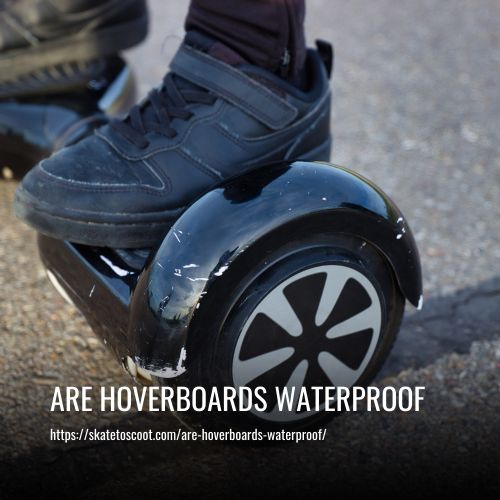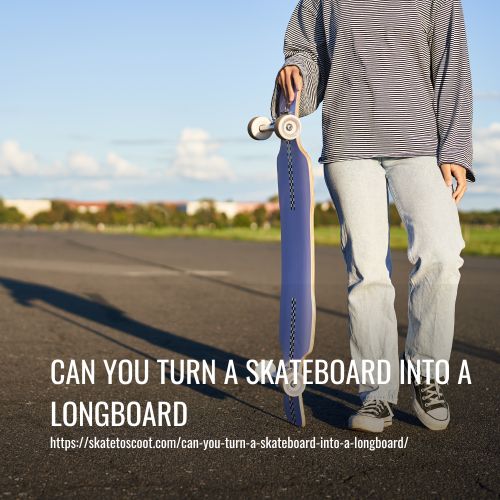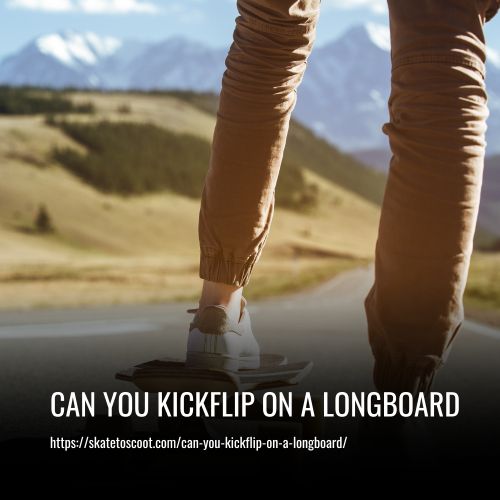As an Amazon Associate we earn from qualifying purchases.
Hoverboards, the all-terrain electric scooters that can be ridden anywhere, are not entirely waterproof. Although they come with an IP rating that makes them water-resistant, you cannot carry them in water. Hoverboards require electrical parts to function properly, and these parts can be damaged by water.
The lithium-ion battery, heavy motor, and motherboard of this tech device may sustain damage because of water. Therefore, it is advised not to take your hoverboard into the water or ride it during heavy rain. However, being exposed to everyday water splashes should not be a problem for hoverboards.
If the electrical parts of your hoverboard are submerged underwater, there is a high possibility they will fail and need replacing. Replacing electrical components is an expensive affair. Fortunately, modern hoverboards are improving by the day, and there is hope of having waterproof hoverboards shortly.

What is an IPX4 Rating?
An IP rating, short for Ingress Protection, is a measure of protection against solid objects, water, and other factors. When you purchase an electrical product like a hoverboard or Swagtron T6, you are likely to encounter this term. The rating is determined through thorough testing, and there are various types of ratings available.
IPX4 is the most common IP rating that you’ll come across, and it’s what you’ll find on many electrical products, including hoverboards. This rating means that the product can withstand water splashes from any angle, although it’s worth noting that it won’t protect against a stream of water.
Water-Resistant Hoverboards
Water-resistant hoverboards have become increasingly popular among users due to their capability to withstand water splashes for a longer time than standard hoverboards. Although all hoverboards have an IPx4 rating, several models have a higher water resistance.
These all-terrain hoverboards, with their large 10″ inflatable wheels, are known for their water resistance. They can withstand water splashes for up to 5-6 minutes from an angle. This makes them a perfect choice for those who enjoy riding through wet grass or damp conditions.
It’s important to note that while these hoverboards are water-resistant, they are not completely waterproof. Therefore, they should be dried off after exposure to water, and users must avoid riding them in heavy rain or submerging them in water. By taking these precautions, water-resistant hoverboards can serve as a reliable mode of transportation even in light rain and wet conditions.
Hover Board Electronics Don’t Like Water
Hoverboards may look sturdy but exposing them to water could greatly affect the electric components that make it run. The motherboard and lithium-ion batteries can suffer water damage and if this happens, your board will most likely stop working. Although some hoverboards claim to be water-resistant, they are not designed to withstand being submerged in water.
It’s important to keep in mind that electric components and water don’t mix. While some hoverboards can handle a drizzle or be driven over a small puddle, it’s still recommended to avoid exposing it to any kind of moisture. The risk of exposing the electronics and battery to water is not worth the potential damage that can be caused.
Self-Balancing Boards + Wet Surfaces = A Dangerous Combination
When it comes to riding a self-balancing board, exposure to water can spell disaster for your device and your person. Although some boards claim to be water-resistant or water-repellant, it’s still recommended that you avoid operating your board near any type of moisture.
Even if you have an all-terrain hoverboard with a sturdy design meant to withstand the elements, like the Swagboard T6 Outlaw, it’s still not recommended to ride on wet surfaces. Any contact with water can lead to electrical damage, internal corrosion, and loss of stability, making it an all-around bad idea.
Are There Any Waterproof Hoverboards?
Currently, there are no waterproof hoverboards available in the market. Although some hoverboards claim to be water-resistant, it is still not advisable to use them near water. These hoverboards are mostly rated IPX4, which means they are built to withstand light splashes but are not completely waterproof.
Manufacturers may advertise these hoverboards as water-resistant, but they often do not offer water damage warranties. This implies that even these water-resistant hoverboards are not completely safe from water damage and should not be in contact with water.
What Happens if a Hoverboard Gets Wet?
Hoverboards are intricate electronic devices that consist of vulnerable sensors, electric components, and lights. Water damage can pose a significant threat to its survival. When the electronic components come in contact with water, it can cause a short circuit between the motherboard and the battery, eventually damaging both.
Water is a good conductor of electricity, and a hoverboard’s motherboard has numerous capacitors, relays, and switches, increasing the likelihood of a short circuit. If the motherboard gets damaged, it can lead to a battery malfunction, fire, or explosion. As a hoverboard owner, it’s essential to avoid water exposure to minimize the risk.
If your hoverboard gets wet, immediately turn it off and disconnect the battery from the motherboard. It could save the device if the water comes in contact with electronic parts. If you think that water has penetrated the motherboard or other electronic components, then you must take it to the repair shop promptly.
Steps to Fix Water Damage on Hoverboards
Hoverboards can get damaged when they come in contact with water. If you suspect water damage, follow these steps to fix the problem:
- STEP 1 – Power Off: The first thing you should do is turn off the hoverboard when you notice water contact. The longer you keep the board powered on, the higher the risk you run of destroying the entire device. Turning off the board will prevent shorts from occurring.
- STEP 2 – Get Your Tools: Next, it’s time to get handy. You’ll need a Phillips head screwdriver that matches the type of screw head, keeping the shell together.
- STEP 3 – Dismantle the Hoverboard: To disassemble the hoverboard, use a screwdriver to remove the screws holding the bottom shells together. These screws are typically located on the underside of the board. Removing both shells will allow you to locate any water that may have entered the board.
- STEP 4 – Disconnect the Battery: It’s still a good idea to disconnect the battery from the rest of the internal electronics. The battery is typically screwed directly into the hoverboard’s frame, so remove those screws and unplug the battery.
- STEP 5 – Diagnose the Water Damage: To locate the water inside your hoverboard, visually inspect for water droplets or small puddles. Ensure all components of the hoverboard are thoroughly dried before reassembling.
- STEP 4 – Dry the Affected Parts: After you’ve spotted all the water, it’s time to dry. Place the wet internal components into a bowl of rice and keep them there for 12 to 24 hours, as this method works best for removing all of the trapped water. You may also want to do this with your battery if you suspect it got wet. Make sure to take some paper towels and dry off the hoverboard’s external casing as well.
- STEP 5 – Clean Any Dirty Parts: To prevent any leftover debris from causing more problems down the road, use some Q-tips soaked in rubbing alcohol to gently clean the dirty parts after they are completely dry.
- STEP 6 – Reassemble the Hoverboard: After cleaning and drying, reassemble the hoverboard by positioning the bottom shells and using a screwdriver to screw them back in place. Ensure that the battery is reconnected and returned to its original position if it is removed.
- STEP 7 – Power On the Hoverboard: Now that your hoverboard is back in one piece, it’s time to power it back on and see if your problem has been fixed. If your board starts up and runs well, then you’re good to go! Have fun riding your newly repaired hoverboard, and try to avoid the puddles in the future.
- STEP 8 – What If It Doesn’t Work: If your hoverboard is still not functioning properly after troubleshooting, it may be worth contacting the manufacturer to inquire about warranty coverage for water damage or authorized repair centers in your area. If these options are not available, it may be necessary to begin searching for a replacement hoverboard.
Can You Clean A Hoverboard With Water?
Maintaining your hoverboard is crucial if you want it to stay in tip-top shape. However, you must be cautious when using water to clean it. Hoverboards are not waterproof, meaning water can and will damage the device if it gets inside.
To clean your hoverboard, use a damp cloth or a damp brush to wipe away dirt and grime. You can add mild soap to the cleaning solution for an extra clean. But be mindful not to let the water seep into any crevices where the internal components are stored.
Remember, using water to clean your hoverboard is a risk. To avoid water damage, only use a damp cloth or a damp brush, making sure to clean any excess water. This will keep your hoverboard in pristine condition for a long time.
FAQs
To return a wet hoverboard, check the warranty details of the specific model you own. The limited warranty and any supplemental warranty purchased should clearly state what is covered. However, it’s important to note that most manufacturers do not cover hoverboards damaged by water, including any internal damage caused.
Riding a hoverboard in the rain is not recommended due to the risk of water damage to internal components. Although some all-terrain hoverboards have more water resistance, electronics, and water do not mix well, which means the limited warranty may not cover the damage caused by water. Furthermore, replacing parts can be costly, and it can result in serious injuries when riding on a wet surface. Therefore, it is best to avoid riding a hoverboard on a rainy day.
When it comes to riding hoverboards, the safest places are semi-smooth and smooth surfaces such as roads, sidewalks, and hardwood floors. These surfaces provide stability and reduce the risk of accidents. However, there are all-terrain hoverboards available that can be used on grass and trails, but it is crucial not to mistake them for standard hoverboards. If you want to ensure your safety while riding a hoverboard, stick to these recommended surfaces.
It is not recommended to wash your hoverboard with water as it can damage the electronic components and cause internal damage to the motherboard and lithium-ion battery. Instead, use soft wiping tissues or fabric to clean the hoverboard. Avoid using anything wet to clean the hoverboard and never attempt to submerge it in water. By following these guidelines, you can keep your hoverboard in good condition and avoid any water damage.
Maintaining the cleanliness of your hoverboard is crucial for its longevity. To clean your hoverboard, use a damp cloth; ensure it is clean before wiping. Similar to how you treat your laptop or smartphone, take care of your hoverboard when cleaning. After exposure to damp conditions, wipe it down with a dry cloth and store it in a dry area with good ventilation to prevent further damage.
Yes, some hoverboards are compatible with sandy terrains. Specifically, all-terrain hoverboards are designed for riding on sand. However, it is important to note that these vehicles are not ideal for this environment and should be used with caution to avoid accidents. Additionally, speed must be limited when riding on sand.
Hoverboards that can be used on the water are called flyboards. These devices are jet-propelled and can lift a person into the air, simulating the feeling of flying. Unlike regular hoverboards, flyboards are designed to operate on water as they are propelled by jets of water.
Hoverboards are suitable for riding both outdoors and indoors. With their all-terrain design, they can navigate through various environments. However, it’s essential to remember that certain terrains may offer better performance compared to others.
Conclusion:
Hoverboards are not completely waterproof. While some hoverboard models may have water-resistant components, they are not designed to be fully submerged in water.
This article aims to provide readers with an understanding of the different terms and ratings associated with water resistance and how they apply to hoverboards. By knowing the limitations and risks associated with using a hoverboard in wet conditions, riders can take appropriate precautions to avoid water damage and potential injury.
Amazon and the Amazon logo are trademarks of Amazon.com, Inc, or its affiliates.



